Denbighshire: Rings and 17th Century coins declared treasure
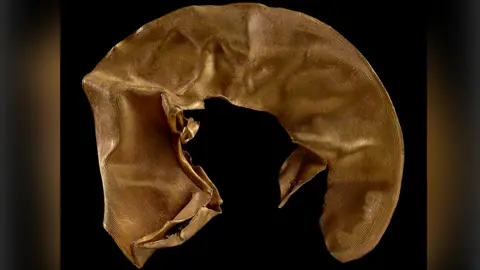 Amgueddfa Cymru/National Museum Wales
Amgueddfa Cymru/National Museum WalesA medieval gold ring, 17th Century silver coins and the fragment of a Bronze Age ring found in north Wales have been declared treasure.
An inquest at Ruthin in Denbighshire found items uncovered at eight sites met the treasure criteria.
Several museums have expressed an interest in acquiring the items for their collections.
Two 17th Century coins and a gold engraved ring will be returned to their finders after no museum interest.
Kate Sutherland, assistant coroner for north Wales east and central, ruled the items met the treasure criteria of being more than 300 years old and containing at least 10% precious metals during the hearing.
The oldest item was the fragment of a gold lock ring from 1000-800 BC found by metal detectorist Chris Wood in a field at Holt in Wrexham.
It is only the seventh lock ring found in Wales from five locations. The National Museum of Wales has registered interest in acquiring the treasure.
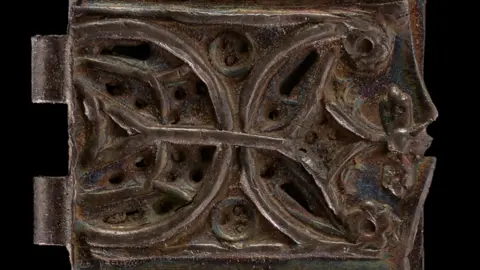 Amgueddfa Cymru/National Museum Wales
Amgueddfa Cymru/National Museum WalesA medieval silver buckle plate was found wrapped around half a silver coin by Ian Cox on his land at Henryd in, Conwy.
The Conwy Culture Centre wanted to add these items to its collections.
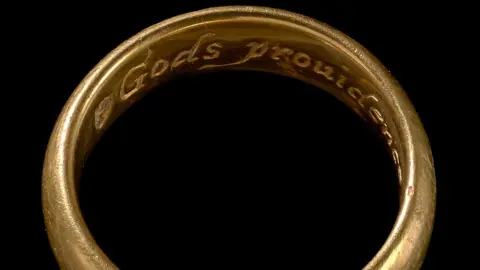 Amgueddfa Cymru/National Museum Wales
Amgueddfa Cymru/National Museum WalesA post-medieval gold posy ring was found at a metal detectorist rally in Esclusham in Wrexham in June 2021.
Bearing the inscription "God's providence is our inheritance", it is thought to be from 1680-1720.
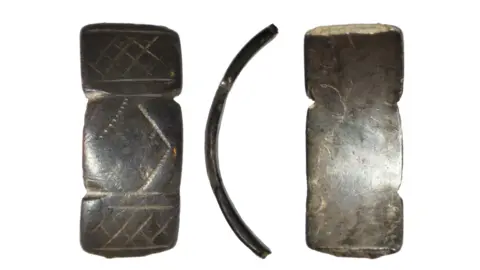 PAS Cymru
PAS CymruPart of a medieval silver ring was found at Llandegla, Denbighshire, by metal detectorist James Larkin at a rally in August 2022.
Denbighshire museum service is interested in acquiring the ring which is dated to about 1400-1500 and is decorated with lines and cross hatching.
 Amgueddfa Cymru/National Museum Wales
Amgueddfa Cymru/National Museum WalesA 17th Century silver shilling and sixpence were found by metal detectorist Mick Brady in Aberwheeler, Flintshire, in December 2020.
It is thought the coins could have fallen from a purse.
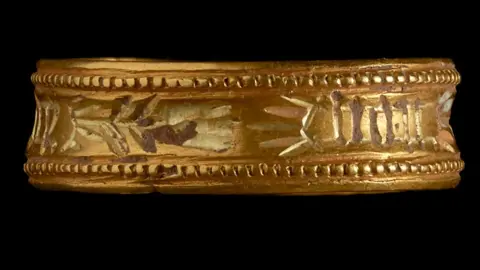 Amgueddfa Cymru/National Museum Wales
Amgueddfa Cymru/National Museum WalesA medieval gold finger ring inscribed with the French phrase "De Bon Coeur" (Of Good Heart) was found by Paul Davies while metal detecting in a ploughed field at Bronington, Wrexham, in April 2021.
It is believed to be a late medieval betrothal ring from the second half of the 15th Century.
 Amgueddfa Cymru/National Museum Wales
Amgueddfa Cymru/National Museum WalesWrexham museum has expressed an interest in acquiring it for its collections.
